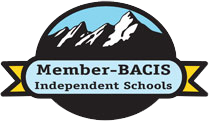-
More: Visit the Rivendell art page

The Rivendell Art curriculum is designed as a project-based, interdisciplinary program based on Howard Gardner’s concepts of Multiple Intelligences. This integrated approach allows for a broad-based scope of learning, while honoring the creative energy of the individual child.
- A project-based approach is appropriate to holds a child’s attention and inspire creativity through active learning (as opposed to lecture-based learning). We learn by doing!
- The interdisciplinary model is designed to follow closely with subject and content areas of focus taught in the regular classroom throughout the year. The effect is to enhance content learning across the curriculum.
- Howard Gardner’s theory of Multiple Intelligences suggests that each individual child has his/her own “best” way of learning. Activities that involve creativity and which encourage an individual approach develop each child’s individual learning style.
Rivendell’s art curriculum includes:
- Elements and Principles of Design for the modern artist
- Diversity and Multicultural Issues
- Interdisciplinary Arts Education; Integrated Learning
- Incorporation of Art History and Theory into Project-based Learning
Preschool
At the pre-school and early learning level, the focus is on manipulation of a variety of tools and materials. Mastery translates into a child’s ability to express himself/herself effectively and to their satisfaction. Both fine and gross motor skills are developed.
Sample Lesson: A drawing lesson in which students master the ability to create and use a variety of line shapes, such as wavy, zig-zag, bumpy to create a drawing of a castle translates in to the ability to form letters and numbers, thus enhancing writing ability.
Younger Kids
Younger kids expand on their mastery of skills to a broader level of expressive ability. Now that they can manipulate a pair of scissors, they can actually follow complicated shapes with them to utilize in their creations.
Sample Lesson: Younger kids can use their scissors to create stencil designs of any form. They can use the positive and negative shapes of the stencils to instill more precision in their design-work. This lesson would also carry an emphasis on secondary color mixing to understand the effects of colors on the balance and harmony in their work.
Middle Kids
Middle kids crave a sense of realism in their work, and can find themselves frustrated that what they do still looks “cartoony”. Drawing and “seeing to draw” is introduced at this level. We also emphasize how artists see and interpret “reality” in many different ways.
Sample Lesson: Students will draw a self-portrait, then to alter it, as Picasso would. They have the opportunity to play with realism, through a “cubist” approach. We look at Cubism and the artists of that movement. We also use color and line to direct the viewer’s eye through the work, adding intentionality to our abstractions.
Older Kids
Older kids have a true mastery of materials and concepts, which allows them a great deal of freedom in their expression. We continue to develop drawing skills, adding 3D techniques, such as perspective and shading, as well as proportion and more detail, in our drawings.
Sample Lesson: Students will draw a cityscape in correct single point perspective. We will study artists of the Industrial Revolution, such as Sheeler, who captured the changing landscape of America during that time in our history.


